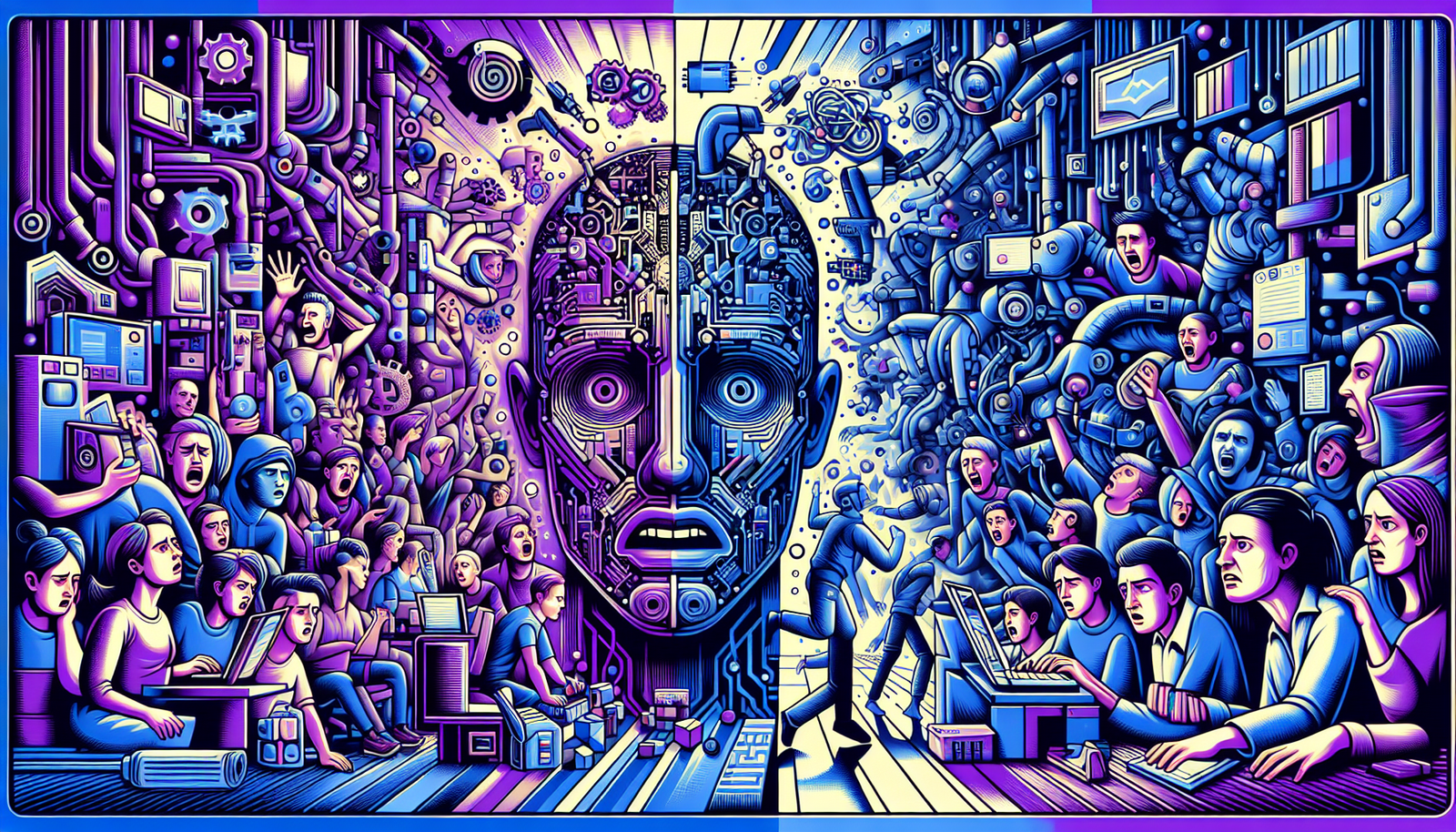Creative workers are facing a dizzying evolution with the rise of artificial intelligence. The technological revolution generates ambivalent feelings: between fear of obsolescence and hope for innovation, professionals are questioning their future. The dynamics of AI are transforming the very nature of creativity, raising the question of coexistence with powerful algorithms. On one hand, anxiety about a potential disappearance of jobs haunts minds; on the other hand, unprecedented prospects for efficiency and collaboration are emerging. The confrontation between artistic tradition and technological advances is shaping a new professional landscape.
The rapid transformations of the creative sector
The staggering rise of artificial intelligence is prompting a mixed reaction among creative workers. Far from being uniform, perceptions oscillate between anxiety about obsolescence and optimism regarding the new opportunities presented by advanced technologies. Confronted with the increased use of AI tools, professionals in the sector must navigate a rapidly changing landscape.
The fear of job disappearance
The rise of AI generates palpable concern, as many creators fear that machines will replace their skills. Nearly 38% of workers express reservations about the sustainability of their jobs. They fear that the automation of tasks will force them into career transitions, undermining their sense of identity and fulfillment. This prospect of de-skilling is causing turmoil within professional collectives, leading to increased mobilization of unions.
The necessity for positive adaptation
In the face of these challenges, the adaptability of workers is an essential key. Learning to master AI tools could lead to a productive symbiosis between humans and machines. Professionals can evolve into roles where human interaction complements AI, transforming forms of creative expression. This ability to innovate will allow for a redefinition of the contours of creative work, making collaboration between technologies and humans not only desirable but necessary.
The challenges of creativity in the digital age
Creativity stands out in the face of AI. The perspectives offered by generative models, such as ChatGPT and MidJourney, contribute to an evolution of practices. Individuals who have integrated these technologies discover an enriched potential for their artistic productions, allowing them to explore innovative concepts and unprecedented aesthetics. This phenomenon heralds a revolution in the creative process, where AI can serve as a tool for expansion rather than constraint.
Unions and the protection of workers
With the rise of AI, the voice of unions becomes crucial. They advocate for measures aimed at protecting creative industry workers from potential risks. Collective engagement around regulatory and job security issues is strengthening, supporting the idea that public policies must adapt to this emerging reality. Discussions revolve around the necessity of ensuring a strong ethical framework in the use of these technologies.
A delicate balance between risks and opportunities
The challenge lies in balancing fears and opportunities. Innovative workers know how to leverage technological advances while remaining vigilant about potential pitfalls. Exchange, sharing, and training will continue to play a predominant role in this transition. The ability to adapt becomes a vital element for navigating a sector where the future is unfolding at a dizzying pace.
FAQ on the fears and hopes of creative workers in the face of the rise of AI
What are the main risks associated with the use of AI in the creative sector?
The main risks include algorithmic bias, job loss, and anxiety related to increased dependence on these technologies. These issues raise concerns about the impact of AI on human creativity.
How can AI improve the productivity of creative workers?
AI can automate repetitive tasks, provide inspiration tools, and facilitate online collaboration, allowing creative workers to focus on more innovative projects.
What are employees’ fears regarding advancements in AI?
Employees primarily fear skill obsolescence, job reduction, and loss of control over their creativity in the face of algorithmic dominance.
What opportunities does AI offer for creatives?
It opens new perspectives, such as more effective collaborations with AI tools, the possibility of diversification of projects, as well as access to precise data analytics to target their audience.
How can creative workers prepare for the rise of AI?
It is essential to acquire new technical skills, stay informed about technological trends, and adopt an adaptable mindset to take advantage of innovations.
What types of creative tasks are most likely to be automated by AI?
The tasks most likely to be automated include the creation of standardized content, basic graphic design, and video editing, while more complex aspects remain the responsibility of humans.
How can companies integrate AI while supporting creatives?
Companies should foster an environment of open innovation, involve employees in the AI integration process, and provide adequate training to facilitate the adoption of digital tools.
What role does AI play in identifying creative trends?
AI can analyze vast datasets to identify emerging trends, allowing creatives to quickly adapt and respond to market demands.
How can the impact of AI on individual creativity be assessed?
The impact can be assessed by observing changes in creative processes, productivity, and employee job satisfaction, as well as by analyzing customer feedback on project outcomes.






